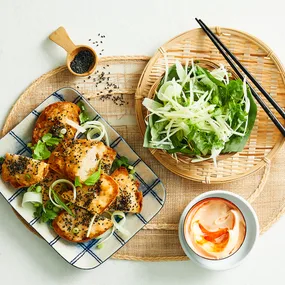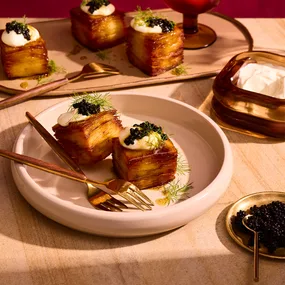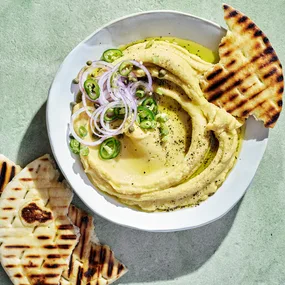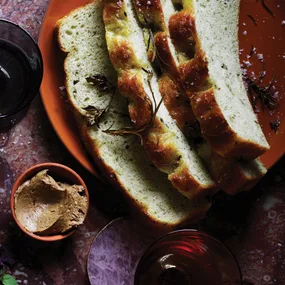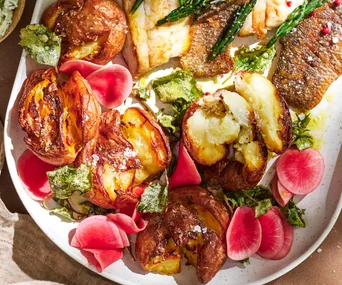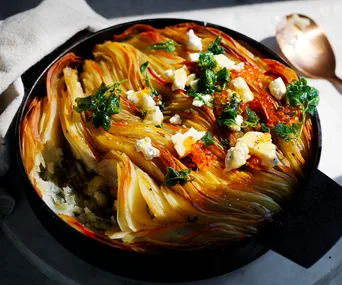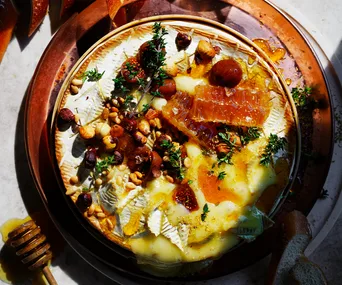Let’s face it – winter fruit can seem lacklustre compared with summer’s bounty. But if you stick to what’s truly in season, you’ll realise how good winter fruit can be. The glossy golden mandarin is a case in point.
Available from June until August, the first mandarin variety to hit the shelves is the imperial. It’s a small-medium fruit with thin, smooth, glossy skin, easy to peel. Next up is the Ellendale, with a slightly longer season, from June until October. A cross between a mandarin and an orange, it’s sometimes known as a tangor and is larger than the imperial with a firmer-fitting skin. To savour the intense sweetness of the honey Murcott, you’ll need to wait until the weather warms up a touch in October and November.
Choose firm fruit heavy for its size, free of bruises, soft patches and wrinkled skin. Smell the fruit. It should smell fresh, with no hint of fermentation. Look for fruit with tight-fitting skin. If the skin is puffy, it’s been on the tree too long and will usually be dry. The exception to this rule is the imperial, which should have looser-fitting skin. Anything else indicates under-ripe fruit.
I like to caramelise mandarin segments in caster sugar, deglazing the pan with a splash of booze to make a rich syrup – Grand Marnier works well. Serve them warm spooned over good quality vanilla-bean ice-cream and dessert’s sorted. Or toss segments with frisée leaves and steamed kipflers and a dressing of sherry vinegar, a squeeze of mandarin juice and olive oil to serve alongside roast duck breast.
If you’re making something which calls for a lot of juice (sweet mandarin juice makes glorious sorbet and jelly), choose fruit with just a little “give” as they’ll yield more liquid. Simply strain the juice and freeze it in an ice-cream maker or set with gelatine – when mandarins are at their best there’s no need for sugar. Don’t bin the peels. Place them on a rack in a dry spot and allow to dehydrate completely, then store in an airtight container and add to master stocks or Chinese-influenced sauces.
With its lustrous dark-green leaves and white stalks, silverbeet just looks wintry. It’s a prolific vegetable, so if you have a vegetable patch, it’s well worth sowing. But if, like many of us, you’re getting this often-overlooked vegetable from the shops, choose a bunch with smaller, tender leaves. They should be glossy and show no signs of wilting, while the stems should be crisp, not bendy. Store leaves and stems separately in the crisper of your refrigerator for no more than a few days.
Many people’s experience of silverbeet is, at best, underwhelming. It’s frequently done an injustice, boiled into a waterlogged, mushy mess. It’s far better to sauté thinly sliced stems in good olive oil with plenty of garlic and a good squeeze of lemon until they begin to soften. Add the coarsely torn leaves and toss until they’re gently wilted. Crumble in some salty feta, toss in a handful of crushed pitted green olives and season generously with pepper, and you’ve got a great accompaniment to char-grilled lamb. Or add some silverbeet to a soup of pearl barley, onion and garlic simmered in chicken stock until tender (cooking the stems with the barley), stirring the shredded leaves in at the end. A scattering of finely grated Parmigiano-Reggiano and some crusty bread finishes this off nicely.
For such a diminutive root (a perennial member of the mustard family, it’s closely related to that other pungent favourite, wasabi), horseradish packs a powerful punch. Whole, these chalky white roots give little away and have no apparent odour, but when broken, cut, or especially grated, they release an eye-wateringly sharp smell. This is due to an enzymic reaction, and the smell is some indication of the root’s intense flavour. This makes it ideal for its most common use as a condiment, although in its fresh state it is significantly more powerful than the jarred version. Finely grated and stirred through lightly whipped cream, it adds a kick to roast beef or smoked salmon. Toss it through roasted beetroot with crème fraîche and a handful of coarsely chopped parsley or dill. It makes a fine addition to a Bloody Mary too if you’re that way inclined. Choose firm white roots that aren’t soft and store them in a dark, cool, dry place or the vegetable drawer of the refrigerator for up to a month. Horseradish also freezes well when grated.
Despite the name, Jerusalem artichokes aren’t related to the artichoke, nor do they hail from Jerusalem. It’s thought the name is a corruption of the Italian word girasole, meaning sunflower, to which Jerusalem artichokes are related.
These lumpy bumpy dusty-brown tubers are less than appealing at first glance and you could be forgiven for confusing them with ginger. In their raw state, they have crisp white flesh similar in texture to a water chestnut’s. Choose tubers that are firm and store them as you would potatoes, in a cool, dark, dry place, for up to a week.
Some people think they’re a lot of work, and it’s only fair to disclose that if you intend to peel them, you’ll lose a fair bit in the process, although newer varieties are less knobbly. Our tip is to buy more than think you’ll need – that way you won’t be caught short – and cut away the largest bumps before you start peeling. That said, they’re more than worth the work. The flesh oxidises quickly, so it’s wise to have a bowl of acidulated water at the ready to drop them into.
Jerusalem artichokes are a unique vegetable. Although they’re a carbohydrate, they contain no starch. The type of carbohydrate they contain can’t be broken down by any human enzymes and the undigested carbohydrate passes into the gut intact. To put it delicately, they have a reputation for creating a lot of gas.
Jerusalem artichokes can be cooked like potatoes, but their flesh becomes much softer. Although they can be boiled, steaming is a better method, preventing them from becoming waterlogged. Roasting them ups the flavour ante a notch or two, even more so when they’re roasted in duck fat until darkly golden (see recipe). And leave the skins on – no fiddly peeling equals less fuss, more flavour. Or turn them into a silky-smooth purée or soup. Whichever way you go, their earthy nuttiness makes them great winter eating.
See out the last days of winter with fragrant mandarins, tender silverbeet, earthy root vegetables and feisty horseradish, writes Emma Knowles.
Ingredients
Method
Main
ALSO IN SEASON
FRUIT
Apples, cumquats, custard apples, grapefruit, lemons, limes, nashi, oranges, pawpaws, pineapples, rhubarb, tangelos.
VEGETABLES
Artichokes, avocados, beetroot, broccoli, Brussels sprouts, cabbages, carrots, cauliflowers, celeriac, celery, fennel, garlic, ginger, leeks, okra, olives, onions, parsnips, potatoes, pumpkins, shallots, spinach, swedes, sweet potatoes, turnips, witlof.
SEAFOOD
Blue warehou, grey mackerel, Pacific oysters, sand whiting, silver warehou, snapper, spanner crabs.This recipe is from the August 2009 issue of .
Notes

